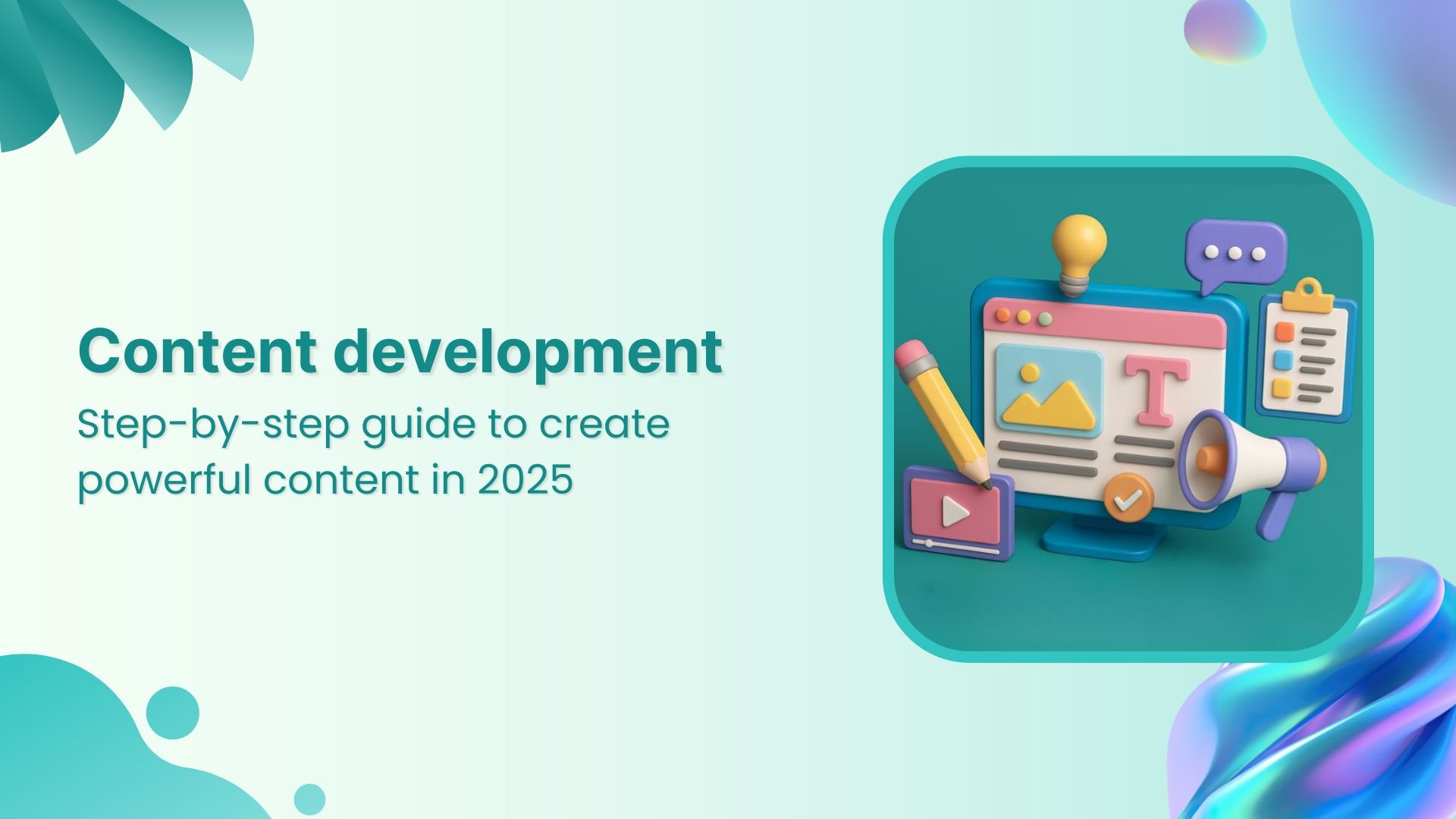Have you ever wondered why some content resonates while others fade into obscurity? Content development has become a crucial aspect of digital marketing, shaping how businesses connect with their audience.
With 91% of B2B marketers incorporating content marketing into their overall strategy and 81% viewing it as a core business strategy, the importance of content is undeniable. Notably, 51% of businesses that invest in content marketing publish content daily, underscoring its significance in staying relevant.
In this article, we’ll discuss simple steps to successful content development in 2025, providing you with actionable insights to enhance your content strategy and achieve remarkable results.
Related read: How to create a content strategy that works?
What is content development?
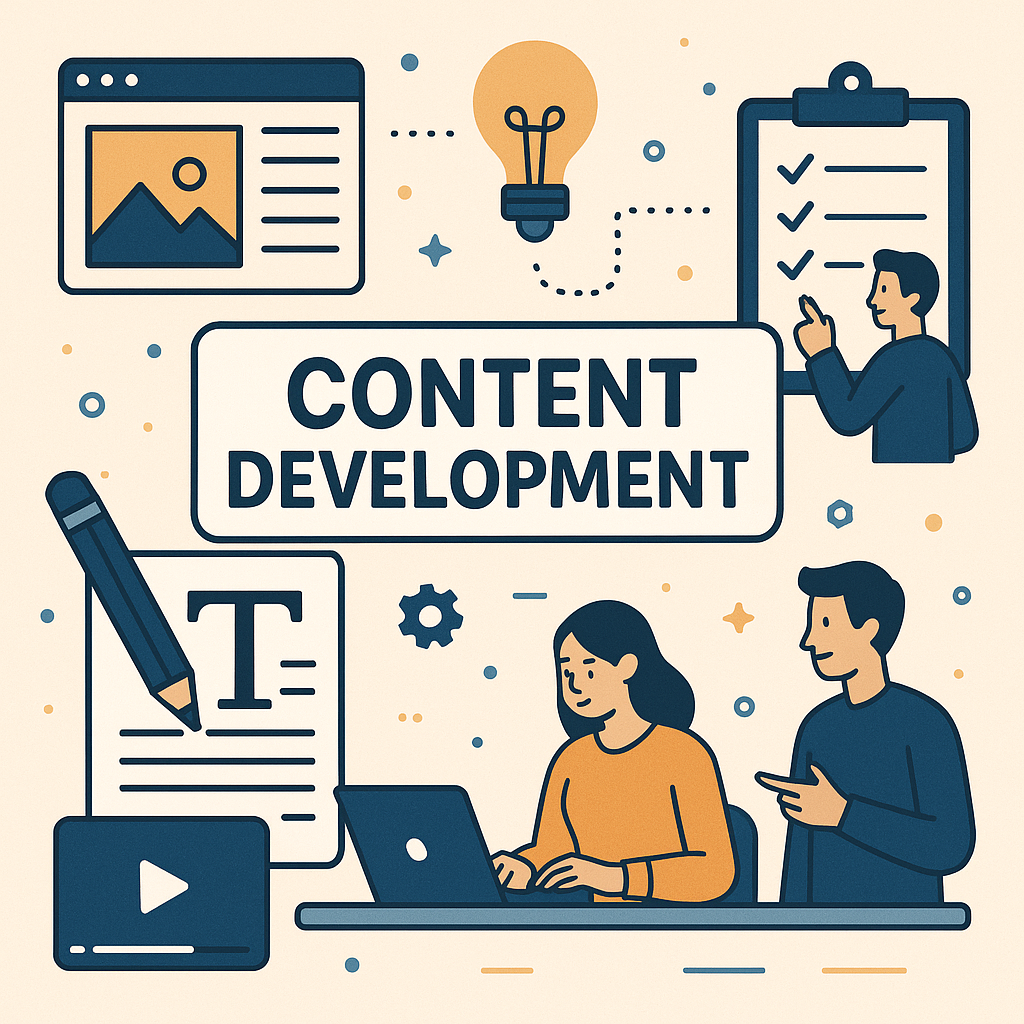
Content development is the process of planning, creating, distributing, and managing content to achieve specific business goals. This content can include blog posts, videos, infographics, social media updates, and more. The process typically involves several key steps:
- Strategizing and planning: Defining goals, target audience, and content types.
- Researching: Understanding audience needs and identifying relevant topics.
- Creating: Writing, designing, or producing the content.
- Optimizing: Ensuring content is SEO-friendly and engaging.
- Publishing: Distributing content through appropriate channels.
- Analyzing: Measuring performance and making improvements.
For example, a tech company may aim to boost brand awareness by publishing a series of blog posts on their website. They start by planning the topics and identifying their target audience, researching popular and relevant subjects, creating informative and engaging posts, optimizing them for search engines, publishing them on their blog, and analyzing their performance to refine future content.
Why is content development important for your business?
Content development is crucial for modern businesses. It helps them connect with their target audience, establish authority in their industry, and drive growth. High-quality content can attract, engage, and convert potential customers, making it a vital part of any marketing strategy.
Here are some content development pros that highlight why it is essential:
- Increases brand awareness
Regularly publishing valuable content helps your business become more visible online, attracting new audiences and increasing brand recognition. By sharing informative and engaging content across various platforms, your business can reach a wider audience. This increased visibility can lead to more people recognizing and remembering your brand, which is crucial for long-term growth and success.
- Builds trust and credibility
Regularly publishing valuable content helps your business become more visible online, attracting new audiences and increasing brand recognition. By sharing informative and engaging content across various platforms, your business can reach a wider audience. This increased visibility can lead to more people recognizing and remembering your brand, which is crucial for long-term growth and success.
- Enhances SEO

Well-optimized content improves your search engine rankings, driving more organic traffic to your website. Search engines like Google prioritize content that is relevant, informative, and regularly updated. By focusing on SEO best practices, such as using targeted keywords and creating high-quality backlinks, your content can rank higher in search results, making it easier for potential customers to find you.
- Generates leads
Effective content can guide potential customers through the sales funnel, converting them into leads and eventually paying customers. By creating content that addresses the needs and pain points of your audience, you can attract and nurture leads at different stages of the buying process. For example, blog posts, eBooks, and webinars can provide valuable information that helps prospects make informed decisions, ultimately leading to conversions.
- Engages your audience
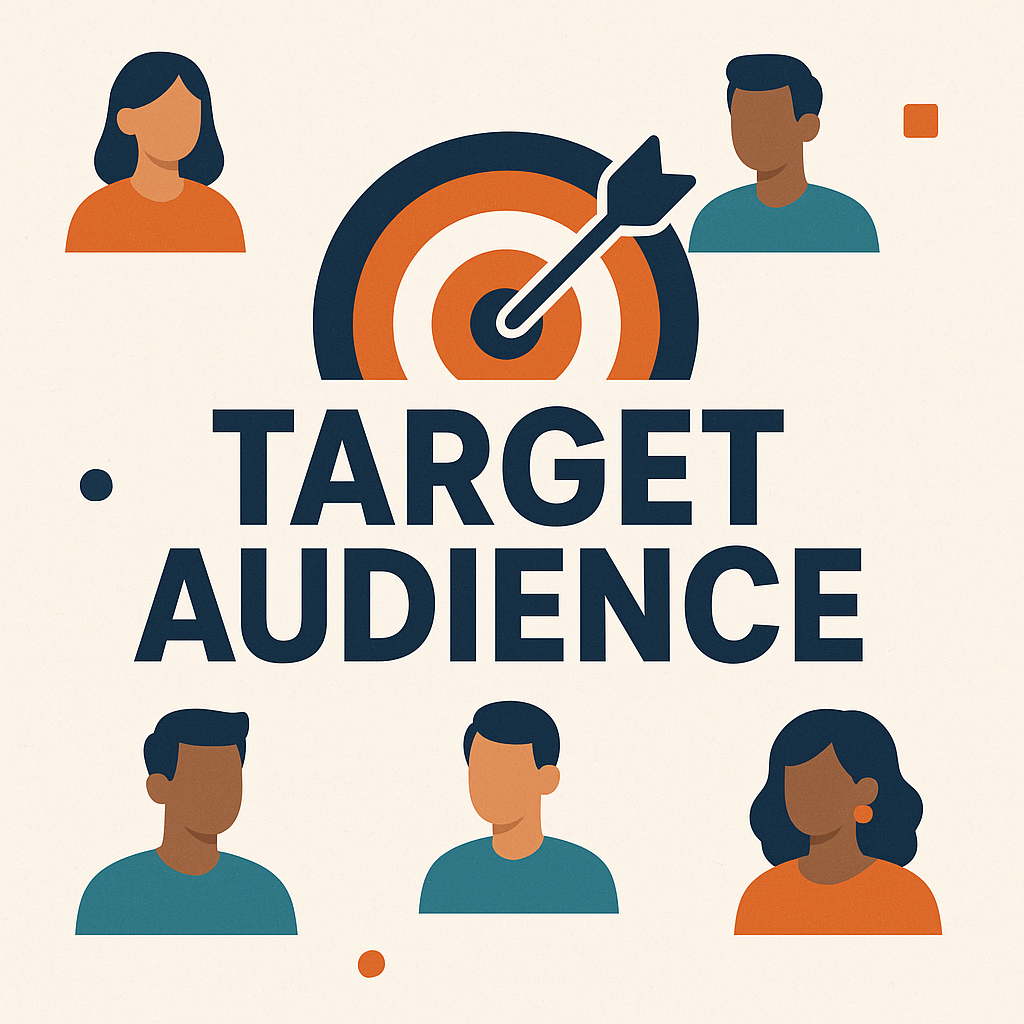
Engaging content keeps your audience interested and encourages interaction, fostering a loyal community around your brand. Interactive content such as polls, quizzes, and social media posts can stimulate conversations and increase engagement. When your audience feels connected to your brand, they are more likely to share your content, provide feedback, and become loyal advocates.
- Supports other marketing efforts
Content can be repurposed across various channels, supporting your overall marketing strategy and ensuring consistent messaging. For example, a single blog post can be transformed into a video, social media updates, and an email newsletter. This repurposing not only saves time and resources but also reinforces your marketing messages across multiple touchpoints, increasing their impact.
What is the role of content development in marketing strategy?
Content development plays a pivotal role in a marketing strategy by ensuring that businesses can effectively communicate with their target audience and achieve their marketing goals. Here are some key roles it plays:
- Attracts and engages audience
High-quality content attracts potential customers and keeps them engaged, increasing the chances of conversion. For example, a well-written blog post on solving a common industry problem can draw in readers who are searching for solutions, encouraging them to explore more of your offerings.
- Builds brand authority
Consistently providing valuable information helps establish a brand as an industry leader. When businesses share insights, research, and expertise through their content, they build credibility and trust with their audience. This authority can influence customer decisions and foster long-term relationships.
- Supports SEO efforts
Well-optimized content improves search engine rankings, driving organic traffic to the website. By using targeted keywords, creating high-quality backlinks, and producing relevant content, businesses can enhance their visibility on search engines like Google. This makes it easier for potential customers to find them online.
- Nurtures leads
Content tailored to different stages of the buyer’s journey helps nurture leads and guide them towards making a purchase. For instance, a series of educational emails or downloadable guides can provide valuable information to prospects, addressing their needs and concerns at each stage, and leading them towards a decision.
- Enhances customer retention
Regularly updated content keeps existing customers engaged and fosters loyalty. For example, a company that regularly publishes helpful tutorials and updates on their products can keep their customers informed and satisfied, encouraging repeat business and positive word-of-mouth.
Example: A software company aims to increase its customer base and establish itself as an industry leader. They develop a content development strategy that includes blog posts on tech trends, SEO-optimized articles for higher search rankings, and detailed eBooks for different buyer journey stages. They also create video tutorials to help current users make the most of their software. This comprehensive approach not only attracts new visitors but also builds trust, supports SEO efforts, nurtures leads, and retains existing customers.
What is the content development process?
The content development process is a structured approach to creating valuable and effective content that aligns with your business goals and resonates with your audience. Each step is crucial for ensuring that the content is relevant, engaging, and successfully reaches its intended audience. By following these steps, businesses can streamline their content creation efforts and achieve better results.
Here are the steps:
Step 1: Content planning
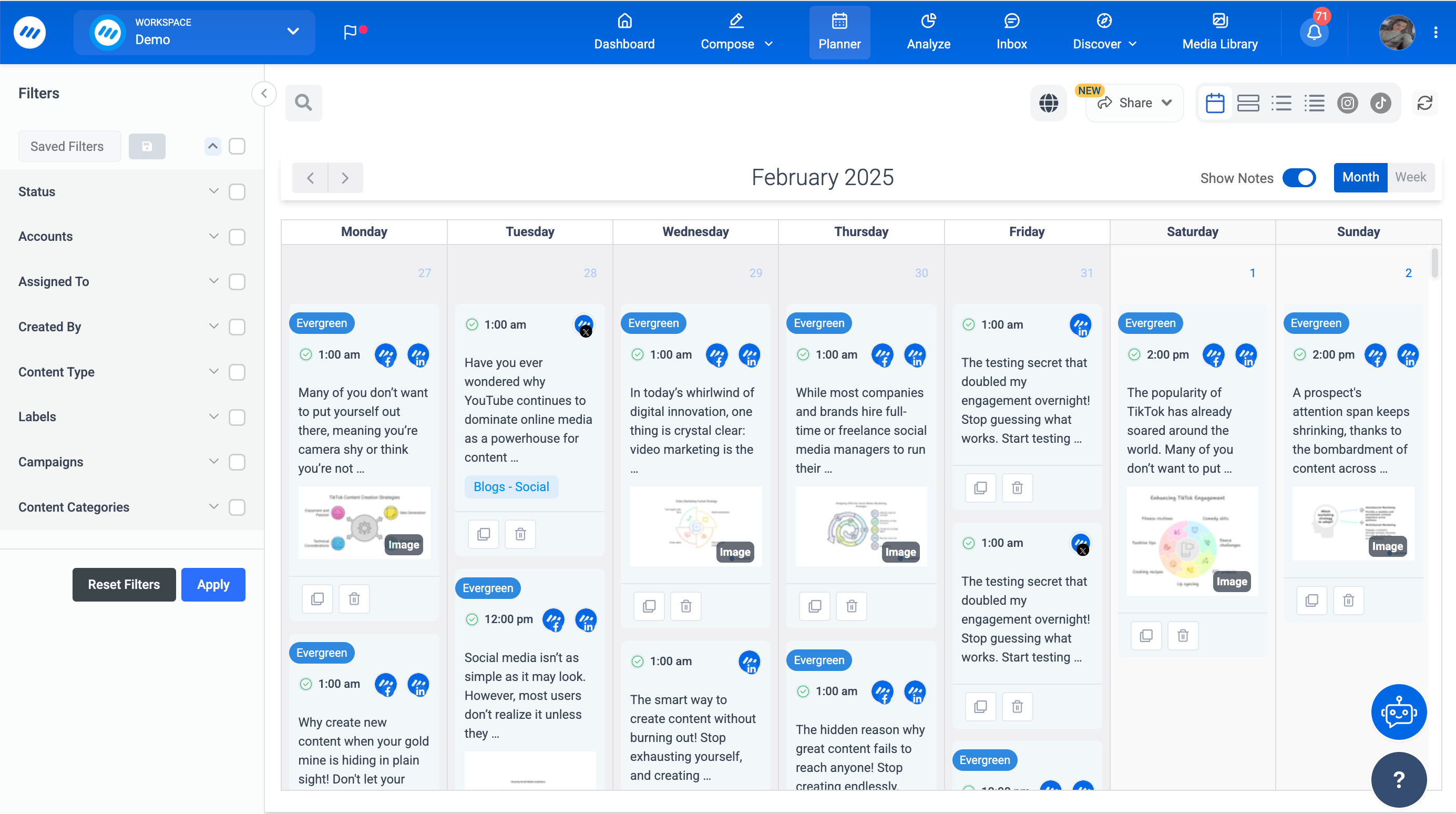
Planning involves defining your goals, target audience, and the types of content you will produce. This step is critical for setting a clear direction and ensuring that your content aligns with your business objectives. Establishing goals helps determine the purpose of your content, while identifying your target audience ensures that you address their needs and preferences. Deciding on content types, such as blog posts, videos, or infographics, helps streamline the creation process and sets the foundation for your content strategy.
- Conduct keyword research
Keyword research involves identifying the terms and phrases your audience uses when searching for information. This step is vital for optimizing your content to rank higher in search engine results. Use tools like Google Keyword Planner or SEMrush to find relevant keywords and incorporate them naturally into your content. Effective keyword use enhances visibility, attracts organic traffic, and ensures your content reaches those actively searching for topics related to your business.
Step 2: Content research

Researching involves gathering information and insights on relevant topics to create informative and valuable content. This step includes identifying trending topics, understanding audience needs, and analyzing competitors. Conducting thorough research helps ensure that your content is accurate, up-to-date, and addresses the interests and pain points of your audience. By leveraging credible sources and data, you can produce content that stands out and provides real value to your readers.
Step 3: Creating content
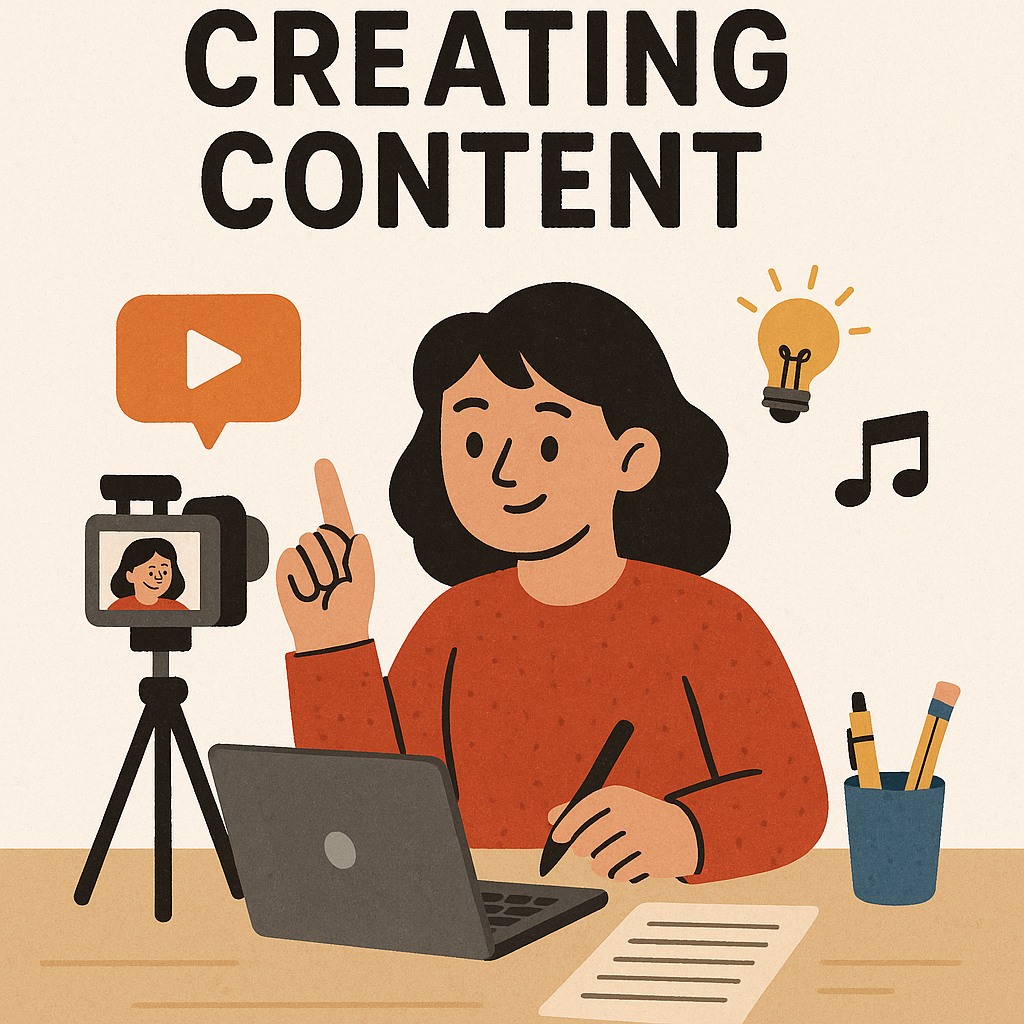
Creating is the process of writing, designing, or producing the content based on the research and planning stages. This step involves drafting articles, designing graphics, or producing videos that align with your content strategy. Effective creation requires attention to detail, creativity, and adherence to best practices for content formatting and presentation. Ensuring that the content is engaging, clear, and aligned with your goals is essential for capturing and maintaining audience interest.
Step 4: Content optimization
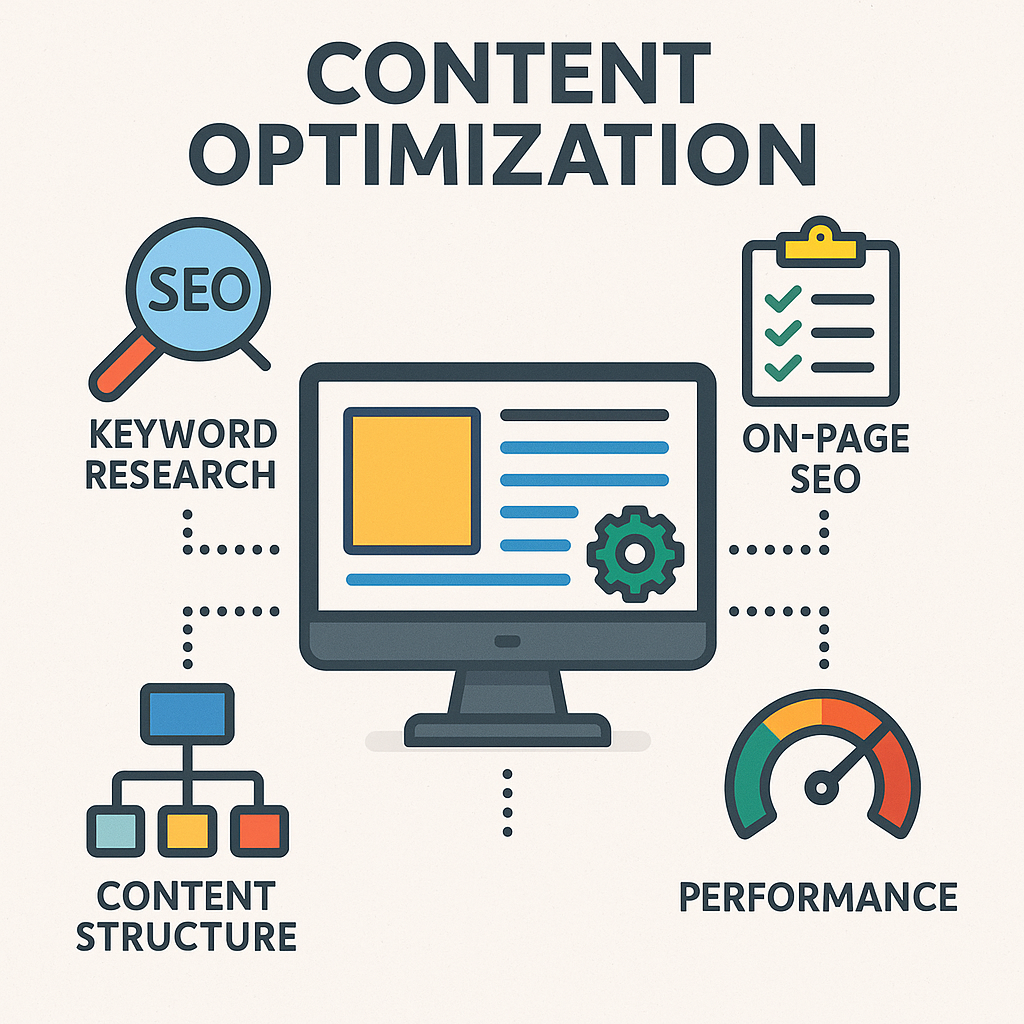
Optimizing involves making the content SEO-friendly and engaging to maximize its reach and effectiveness. This step includes incorporating relevant keywords, optimizing meta tags, and ensuring that the content is easily readable and shareable. Proper optimization helps improve search engine rankings and increases the likelihood that your content will be discovered by your target audience. Engaging content also includes clear calls to action and visual elements that enhance the overall user experience.
Step 5: Content publishing
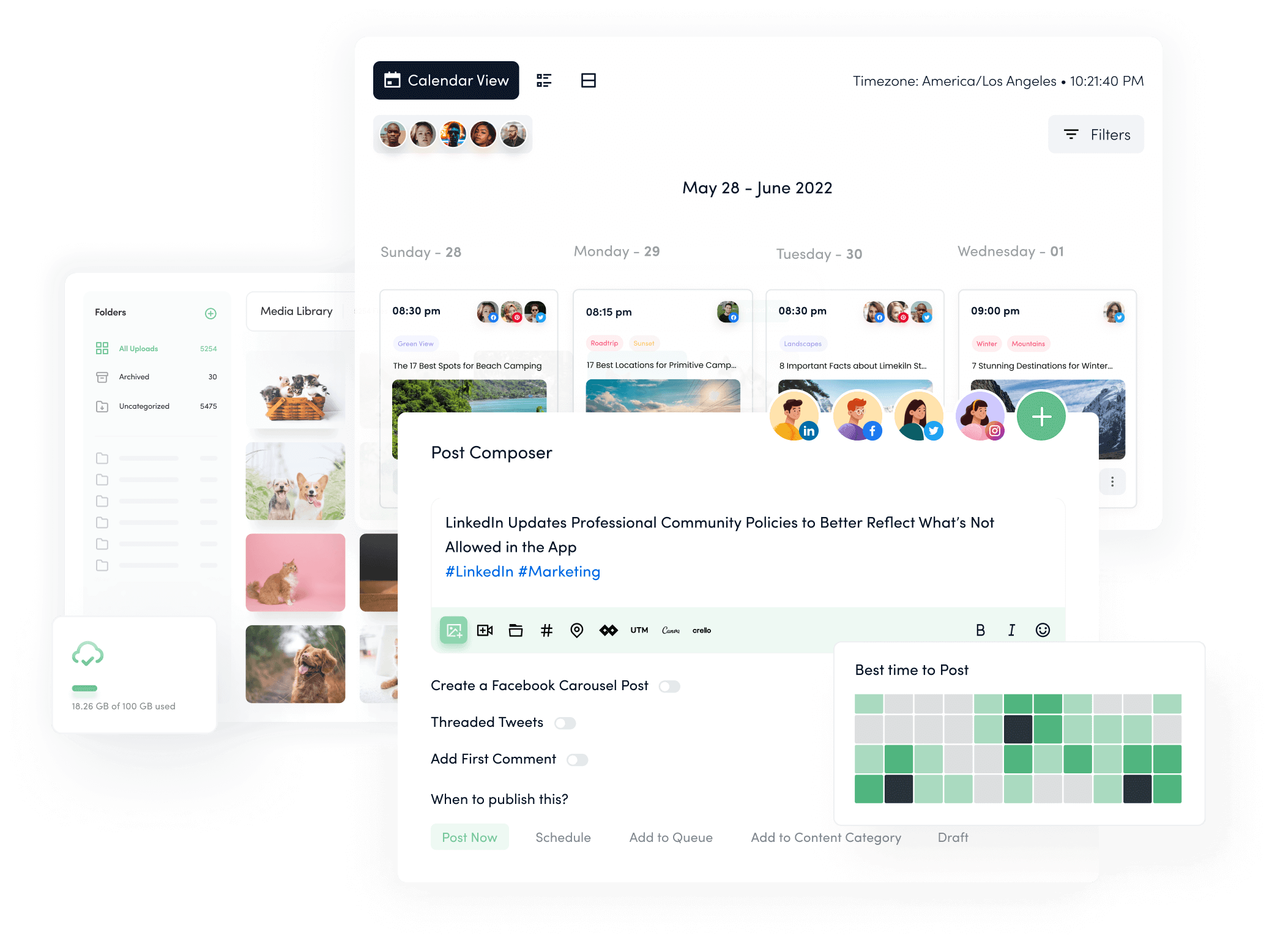
Publishing is the process of distributing the content through appropriate channels to reach your target audience. This step involves selecting the right platforms, such as your website, social media, or email newsletters, to share your content. Effective publishing ensures that your content is accessible to your audience and strategically timed for maximum impact. Proper distribution helps drive traffic, engagement, and conversions, making it a critical part of the content development process.
Step 6: Content promoting

Promoting involves sharing the content on social media and other platforms to increase its visibility and reach. This step includes leveraging social media channels, email marketing, and other promotional tactics to drive traffic and engagement. Effective promotion helps amplify the content’s reach and ensures that it reaches a wider audience. By using targeted promotional strategies, you can enhance the content’s effectiveness and drive better results.
Step 7: Analyzing
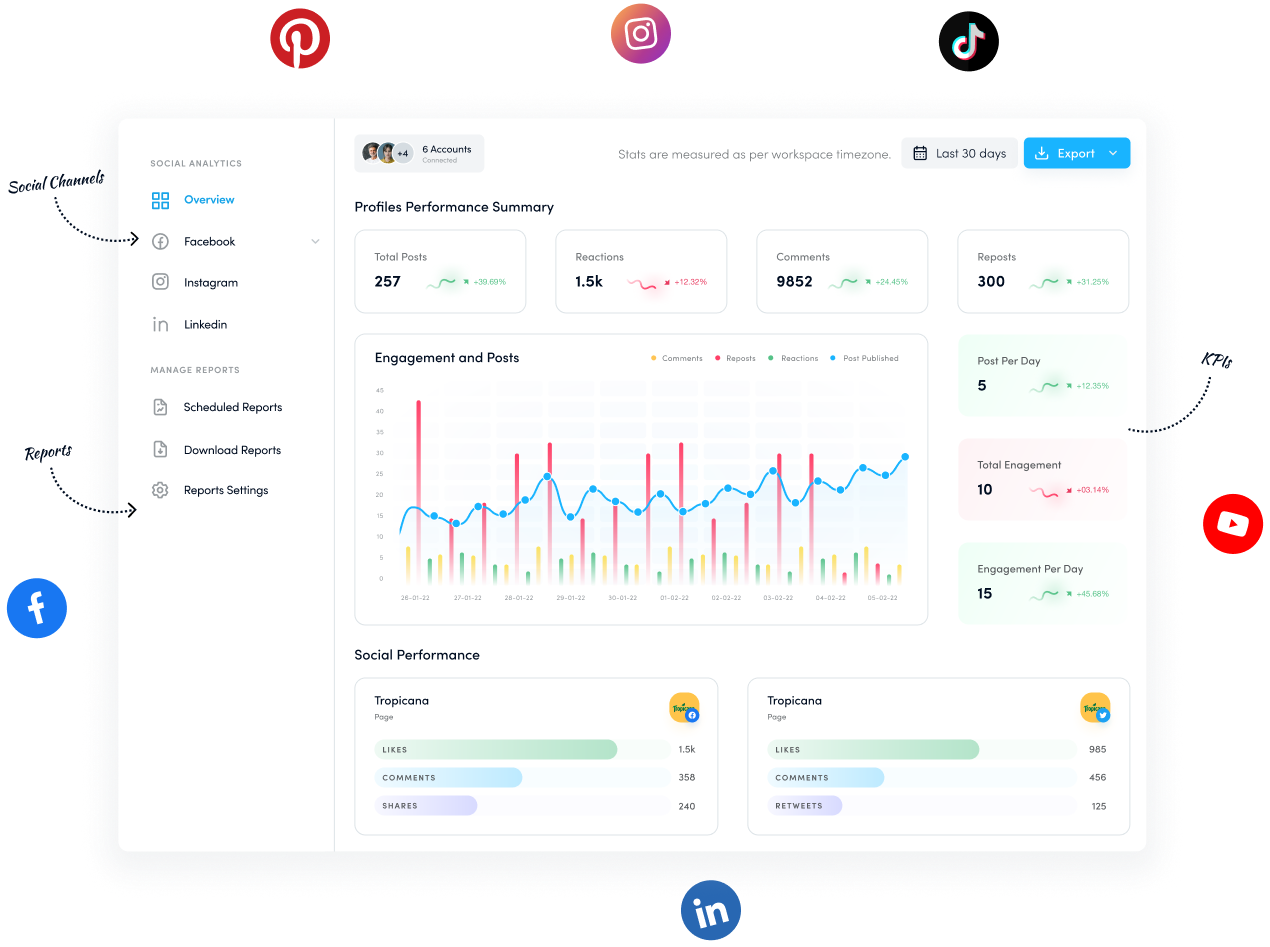
Analyzing involves measuring performance and gathering feedback to improve future content. This step includes tracking key metrics, such as engagement rates, traffic, and conversions, to assess the content’s effectiveness. Analyzing data helps identify strengths and areas for improvement, allowing you to refine your content strategy and make data-driven decisions. Continuous analysis ensures that your content remains relevant, engaging, and aligned with your business goals.
Step 8: Repurpose content
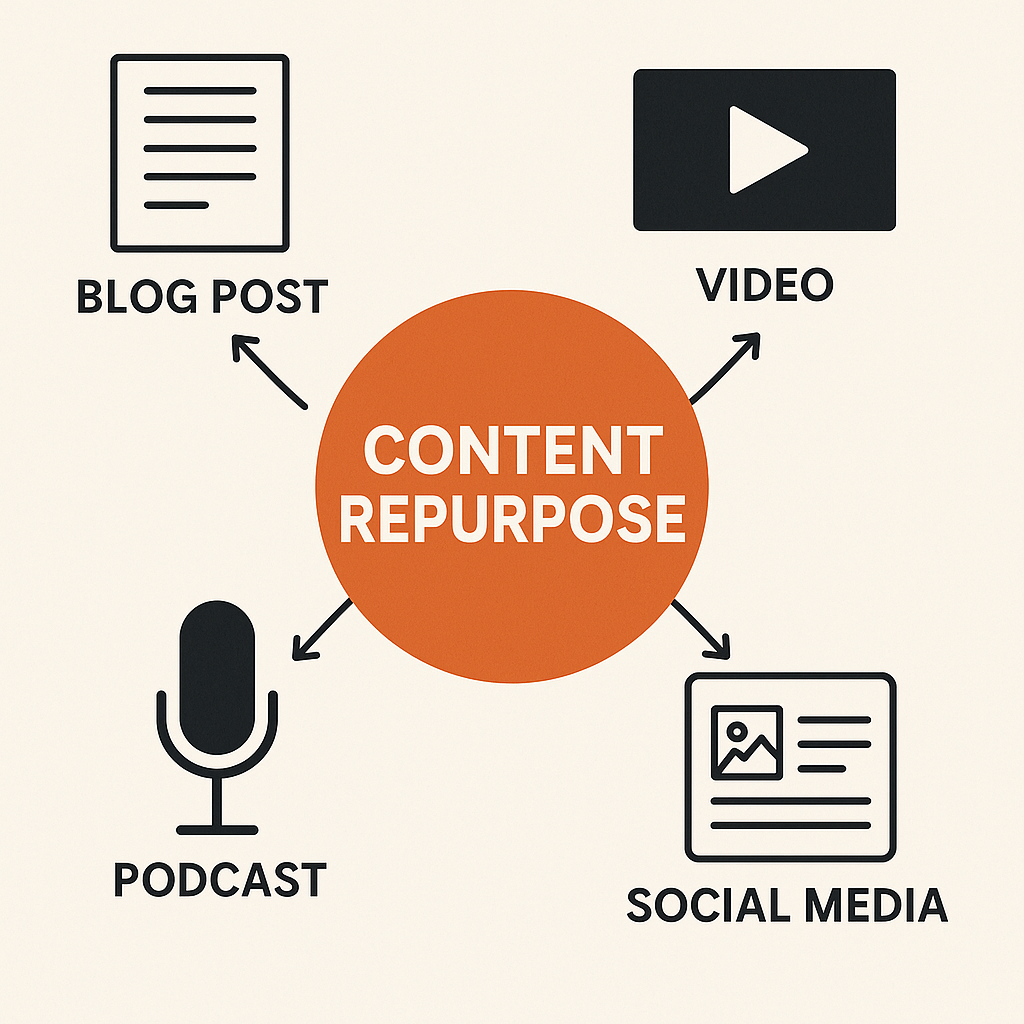
Repurposing involves adapting and reusing existing content in different formats to maximize its value and reach. This strategy can save time and effort while extending the lifespan of your content. For example, turning a comprehensive blog post into a series of social media updates or an infographic can reach different audience segments and reinforce key messages. Repurposing helps ensure that valuable content continues to provide benefits across various channels.
6 content development tools for you
In today’s fast-paced digital landscape, leveraging the right tools can significantly enhance your content development process. From planning and creation to optimization and analysis, these tools can streamline your efforts and help you achieve better results. Whether you’re looking to improve efficiency, boost creativity, or analyze performance, there’s a tool tailored to your needs.
Here are 6 content development tools for you:
1. ContentStudio

ContentStudio is a comprehensive social media management platform designed to streamline the way businesses handle their social media efforts. It provides a unified approach to planning, creating, scheduling, and analyzing content across various social channels.
Ideal for marketers, brands, and agencies, ContentStudio helps users efficiently manage their online presence and drive engagement by offering an array of powerful tools. ContentStudio’s robust features make it a valuable asset for those seeking top-notch content development services.
One of the standout features of ContentStudio is its AI writer, which generates captions, posts, and images, easing the content creation process and overcoming writer’s block. The platform also includes content discovery tools to keep you updated with trending topics, and a content calendar to organize and schedule posts across multiple platforms.
Key features:
- AI writer: Generates captions, posts, and images using artificial intelligence, helping to overcome writer’s block and save time on content creation.
- Content calendar: Provides a visual overview to organize and schedule posts across multiple social media platforms, streamlining your content strategy.
- SEO optimization: Ensures your content is optimized for search engines to improve visibility and engagement with your audience.
- Collaboration tools: Facilitates teamwork with approval workflows and feedback mechanisms, enhancing coordination among team members.
- Analytics and reporting: Offers insights into content performance, helping you refine your strategy based on data-driven decisions.
2. Hemingway Editor
Hemingway Editor is an essential tool for writers focused on clarity and readability. It helps you refine your writing by highlighting complex sentences, unnecessary adverbs, and passive voice. The tool’s goal is to make your content more accessible and engaging by simplifying sentence structures and improving overall readability.
Features:
- Streamlines sentence structure and removes complexity
- Highlights errors in yellow and red for easy identification
- Provides readability scores to gauge content clarity
- Suggests simpler alternatives for difficult words and phrases
- Supports direct publishing to Medium and WordPress
- Allows importing of text as HTML code for various platforms
3. Ahrefs

Ahrefs is a powerful SEO tool designed to enhance content development strategies by providing deep insights into keyword rankings and competitive performance. It helps you track and optimize your SEO efforts by delivering detailed data on how your content and website are performing. By leveraging Ahrefs, you can stay ahead of your competitors and make informed decisions to improve your search engine rankings.
Features:
- Keyword research for finding high-ranking terms
- Site analysis to evaluate SEO performance
- Top Pages report to identify your best-performing pages
- Content Gap report to discover topics competitors cover that you don’t
- Performance reports to monitor content effectiveness
- Competitive analysis to compare your rankings with rivals
4. Unsplash
Unsplash provides a vast collection of high-quality, royalty-free images that are freely available for personal and commercial use. Unlike subscription-based stock photo services, Unsplash offers a wide range of unique photos contributed by photographers from around the world. This platform eliminates the need for costly image licenses and the frustration of searching for suitable images. With Unsplash, you can access and share a diverse array of high-resolution images without breaking the bank.
Features:
- Extensive collection of high-quality, free images
- Royalty-free photos available for personal and commercial use
- Contributions from photographers worldwide
- No subscription or purchase required
- Easy search and download for various image needs
- Diverse and unique images not found on other free platforms
5. PiktoChart
PiktoChart is a powerful tool for creating professional-quality infographics without needing advanced design skills. Ideal for translating data into engaging visuals, PiktoChart allows users to craft eye-catching infographics that can enhance your content development strategy. Whether you’re using the free plan or opting for the Premium plans, starting at $24 per month, PiktoChart provides an easy way to create shareable and impactful visuals for your audience.
Features:
- User-friendly interface for easy infographic creation
- Professional-quality templates and design elements
- Ability to add backlinks to infographics
- No advanced design skills required
- Free plan available with optional Premium upgrades
- Shareable visuals to enhance your content strategy
Wrapping up
The supply chain digital twin represents a transformative approach to network design and optimization. By creating a comprehensive virtual replica of the physical supply chain, organizations can simulate various scenarios, identify cost-saving opportunities, and make more informed strategic decisions aligned with both financial and non-financial objectives.
In 2025, successful content development requires a strategic approach that includes clear goal-setting, understanding your audience, and leveraging the latest tools and techniques. ContentStudio, with its comprehensive features for planning, creating, scheduling, and analyzing social media content, is an excellent example of how modern tools can enhance your content strategy and drive better results.
FAQs
Why is it important to focus on effective content development?
Effective content development builds brand awareness, engages the target audience, and drives business goals. It ensures content is relevant and impactful, leading to better customer relationships and improved marketing results.
What is content development in marketing?
Content development in marketing involves creating and managing content to engage audiences and achieve business objectives. This includes planning, producing, and optimizing content like blog posts and social media updates to drive results.
What is a content development strategy?
A content development strategy outlines how content will be created, managed, and utilized to meet specific marketing goals. It involves identifying target audiences, setting objectives, and planning content types and distribution methods.
What is an example of content development?
An example of content development is creating a series of blog posts to address common customer questions, improving SEO and engagement. This content can be shared across social media and email newsletters.
What is content development in writing?
Content development in writing involves planning, creating, and refining written material to effectively communicate ideas and achieve specific goals. It includes researching, drafting, and editing content for clarity and engagement.
What is the best approach to content development?
The best approach to content development includes setting clear goals, understanding your audience, and creating a well-organized content strategy. Regular analysis and adjustments based on performance insights ensure effectiveness.
